12 Beautiful Purple Perennials to Transform Your Garden
Purple flowers are a wonderful way to bring color and life to your garden. Perennials in shades of purple not only brighten up your space, but they also provide lasting beauty with each bloom. From deep purples to soft lavenders, there are plenty of options to choose from. These plants can create a visually striking garden while requiring minimal care. Purple perennials can also attract pollinators, adding both beauty and life to your outdoor space.
This post may contain affiliate links, which helps keep this content free. Please read our disclosure for more info.
Phlox (Phlox paniculata)
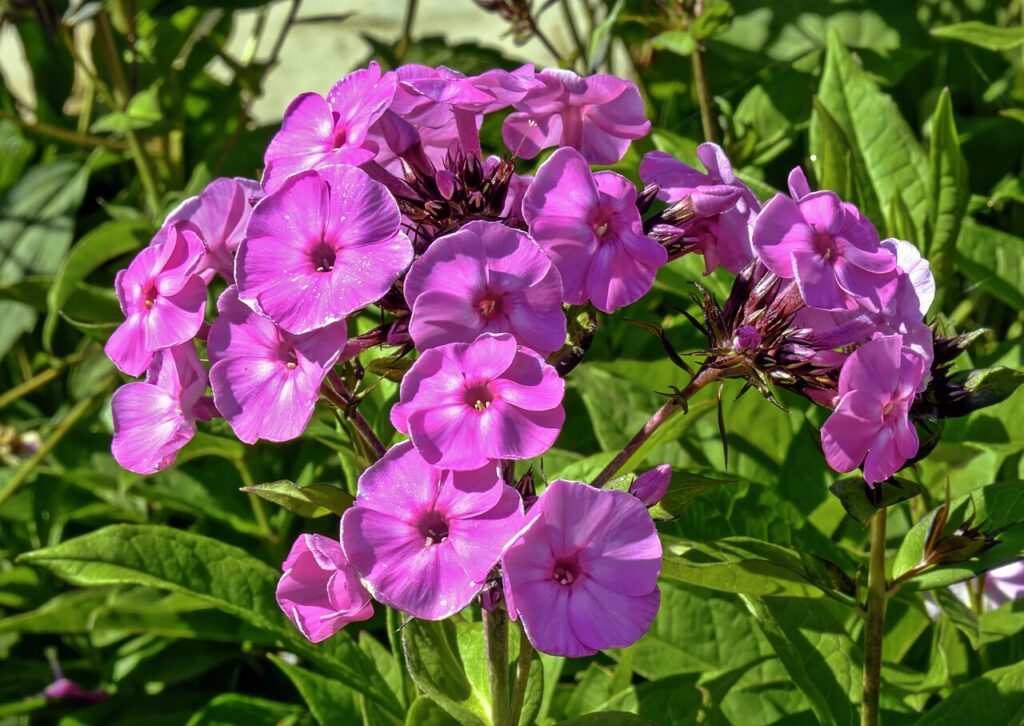
Phlox is a colorful perennial that blooms in various shades, including purple, throughout summer. The purple flowers are produced by anthocyanins, which develop under full sun and cooler temperatures. Phlox is a sun-loving plant that thrives in well-drained, fertile soil. It is an excellent choice for garden beds, as it creates clusters of bright blooms that attract pollinators.
Phlox plants can grow up to 3 feet tall and are perfect for filling garden gaps or adding color to borders. They require regular watering and benefit from periodic deadheading to promote more blooms. Phlox can tolerate a variety of soil types but performs best in slightly acidic, nutrient-rich conditions. The purple variety of phlox brings both beauty and fragrance to the garden during the summer months.
Bleeding Heart (Dicentra spectabilis)

Bleeding Heart is a classic perennial known for its heart-shaped pink and purple flowers that dangle gracefully from arching stems. The purple color is caused by anthocyanin pigments, which are prominent in cooler temperatures. This plant blooms in spring, usually in May, adding a soft touch of color to shaded gardens. Bleeding Hearts thrive in moist, well-drained soil with partial to full shade.
Bleeding Heart plants require regular watering but should not sit in waterlogged soil. They are perfect for creating a cottage-garden look and work well in shady spots or along borders. Their striking, pendant-like flowers make them a unique addition to any garden. After blooming, the foliage often dies back, so it is important to plant them alongside other perennials to maintain garden interest.
Allium (Allium giganteum)

Allium, known for its spherical purple flowers, is a striking perennial that adds height and interest to any garden. The vibrant purple color is produced by flavonoid pigments in the flowers, which bloom in late spring to early summer. Alliums thrive in full sun and well-drained soil, making them easy to grow in most garden conditions. Their globe-like flower heads create an impressive display, often towering over other plants.
Alliums are perfect for creating a bold statement in flower beds or mixed borders. They require minimal care, with occasional watering and deadheading to encourage further growth. Their unique flowers add both color and texture, making them great for cut flower arrangements. With their tall stems and large flower heads, alliums are perfect for those seeking drama and elegance in their garden.
Crocus (Crocus sativus)

Crocus is one of the first flowers to bloom in early spring, often pushing through the last bits of snow. The purple color in crocus flowers comes from flavonoid pigments, which produce rich, vibrant hues. Crocuses thrive in well-drained, slightly acidic soil and full sun. These early-blooming flowers are often found in garden beds or as part of a naturalized landscape.
The purple crocus is a classic flower, with blooms that range from pale lavender to deep violet. These small, bulbous plants are easy to grow and require little maintenance. They make an excellent addition to early spring gardens, offering bright, colorful blooms when other plants are still dormant. Crocus flowers attract early pollinators, including bees, which is an added benefit for any garden.
Balloon Flower (Platycodon grandiflorus)
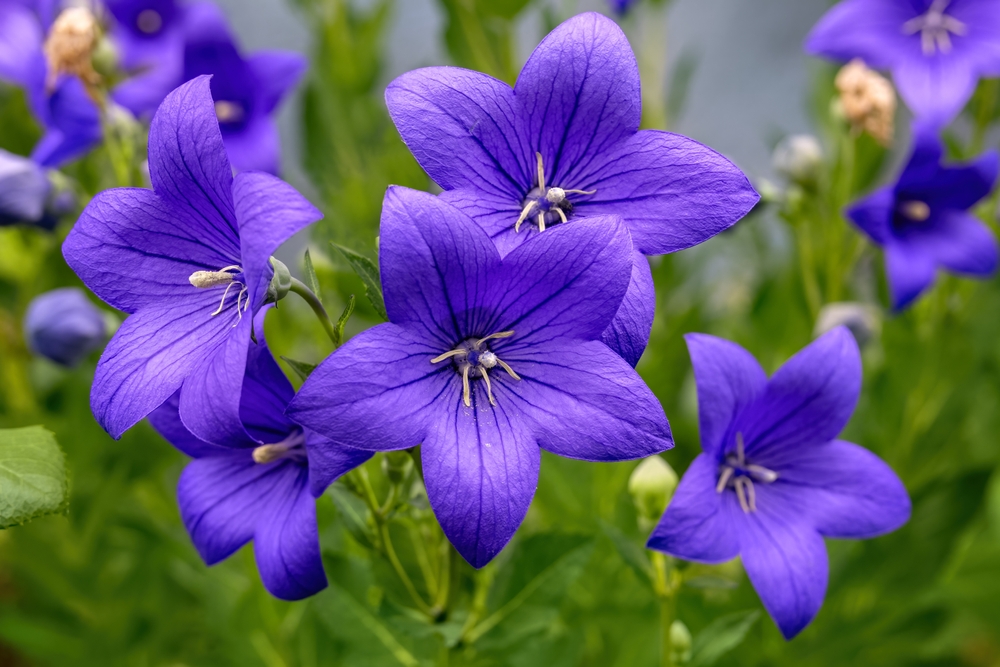
The Balloon Flower gets its name from its unique buds, which resemble balloons before they open into star-shaped purple flowers. The purple hue is caused by the anthocyanin pigment in the petals. These flowers bloom in mid to late summer, creating vibrant color in your garden. Balloon flowers grow well in well-drained soil with full sun and moderate watering.
The plant’s blooms start off as a puffed-up bud that gradually opens into a bell-shaped flower. They are easy to care for and tolerate a range of soil conditions. Balloon flowers are perfect for adding texture and color to garden borders or containers. Their long-lasting blooms and low maintenance make them a favorite among gardeners.
Penstemon (Penstemon digitalis)

Penstemon is a perennial that blooms with tubular purple flowers, attracting pollinators like hummingbirds and bees. The purple color in the flowers is caused by anthocyanin pigments, which are more vibrant in sunny conditions. Penstemon grows well in full sun and well-drained soil, thriving in dry or rocky conditions. These plants bloom in late spring to early summer and can last for several weeks.
In addition to their purple flowers, penstemons have a bushy habit with tall spikes that can reach up to 3 feet in height. Their ability to handle drought and poor soil makes them ideal for low-maintenance gardens. Pruning after blooming encourages additional growth, and they are excellent for border planting or as a focal point. Penstemons are ideal for adding vertical interest and color to a garden.
Verbena (Verbena bonariensis)

Verbena is a tall perennial that blooms with clusters of small purple flowers in late summer and fall. The purple color comes from anthocyanins, and its color becomes more intense under full sun. Verbena thrives in well-drained soil and full sun, and it attracts pollinators such as bees and butterflies. The plant’s airy, delicate flowers create a beautiful, soft texture in any garden.
Verbena is known for its ability to withstand heat and drought, making it a great choice for summer gardens. The plant grows tall, up to 4 feet, and has a loose, airy structure that makes it a perfect filler plant. Verbena’s long-lasting blooms and easy care make it a popular choice for gardeners looking to add purple accents. It’s perfect for cutting gardens and mixed borders.
Catmint (Nepeta faassenii)
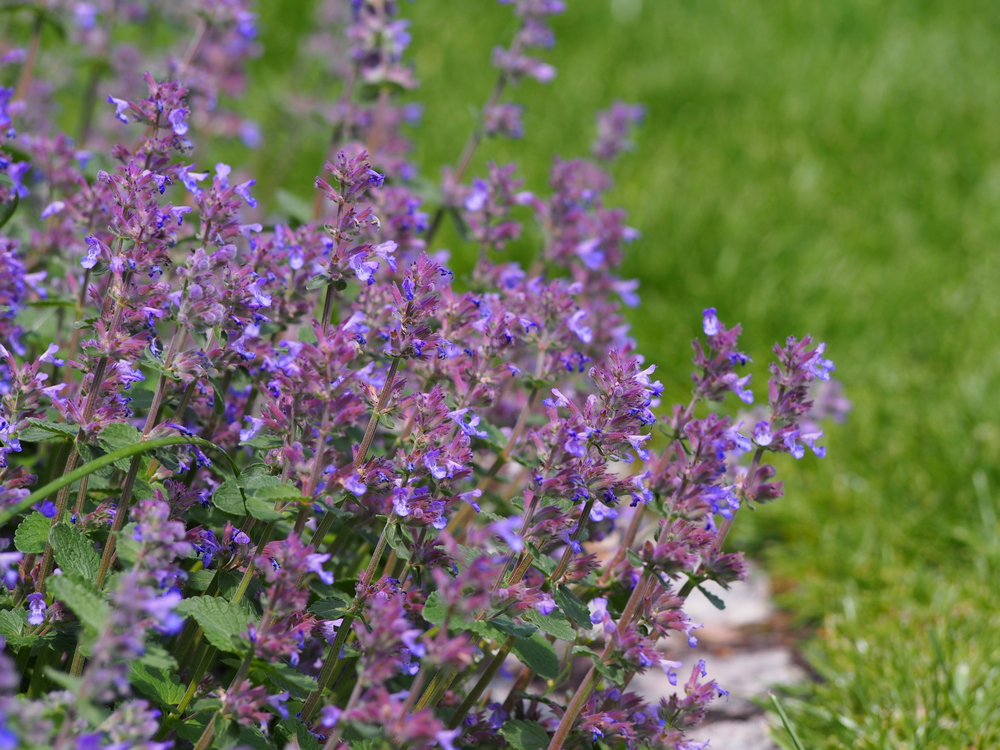
Catmint is a low-growing perennial that produces spikes of purple flowers from late spring to early summer. The rich purple color in the flowers comes from anthocyanin pigments, which are more intense when the plant is grown in full sun. Catmint thrives in well-drained, slightly alkaline soil and can tolerate dry conditions once established. It is a favorite among gardeners for its resilience and long blooming period.
In addition to its beautiful purple flowers, catmint has aromatic foliage that repels deer and rabbits. The plant’s soft, gray-green leaves provide a nice contrast to the bright purple blooms. It is an excellent choice for ground covers, borders, or in-between larger plants. Its drought tolerance and long bloom period make it a reliable addition to any garden.
Japanese Iris (Iris ensata)
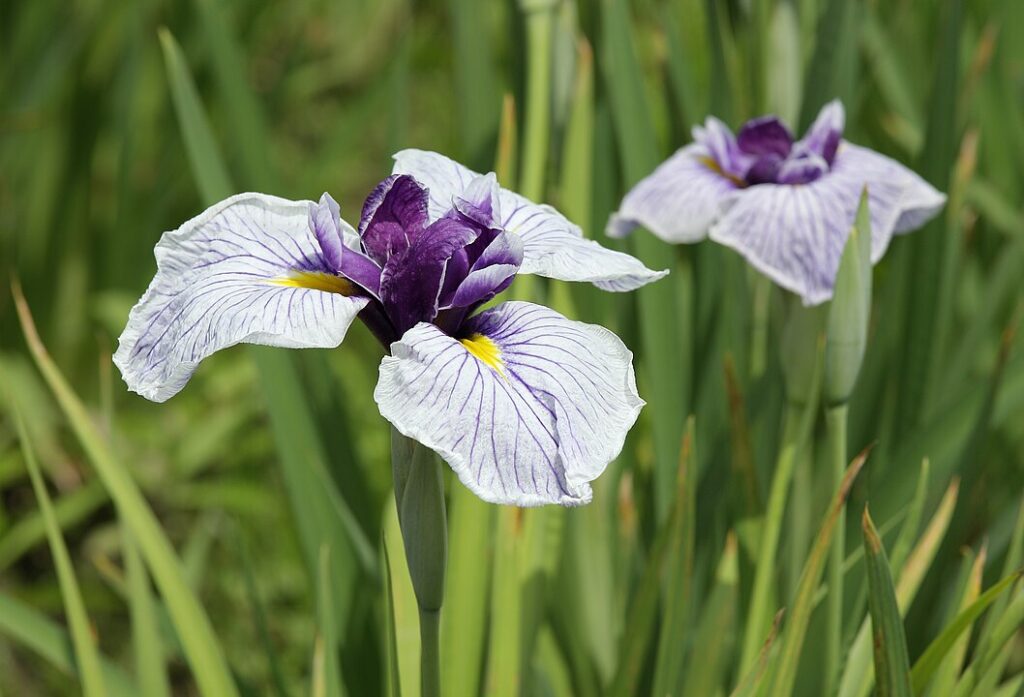
Japanese irises are known for their stunning purple flowers, which come in shades ranging from lavender to deep violet. The purple color is caused by anthocyanins and carotenoids in the petals, which give the flowers their brilliant hue. These irises thrive in moist, well-drained soil and full sun to partial shade. They bloom in late spring to early summer, providing beautiful, elegant flowers that stand tall in the garden.
Japanese irises are often planted along water features, as they love the moist conditions. Their large flowers have a unique, elegant shape and can be quite striking when planted in clusters. These irises require regular watering to maintain their vibrant colors and healthy growth. They are a perfect addition to any garden that can provide them with the moisture they need.
Salvia (Salvia nemorosa)

Salvia, also known as sage, is a perennial that blooms with spikes of purple flowers. The vibrant purple color comes from flavonoid pigments, which produce rich shades of purple that can range from lavender to deep violet. Salvia thrives in well-drained soil and full sun, and it blooms throughout the summer, attracting pollinators like bees and hummingbirds. It is drought-tolerant once established, making it ideal for gardens with dry spells.
In addition to its striking flowers, salvia has aromatic foliage that releases a pleasant scent when disturbed. This plant can grow up to 3 feet tall and spreads about 18 inches, making it perfect for garden borders or as a focal point. Regular deadheading will encourage continuous blooming throughout the summer. Its ability to add vibrant color and attract wildlife makes it a top choice for gardens.
Purple Coneflower (Echinacea purpurea)
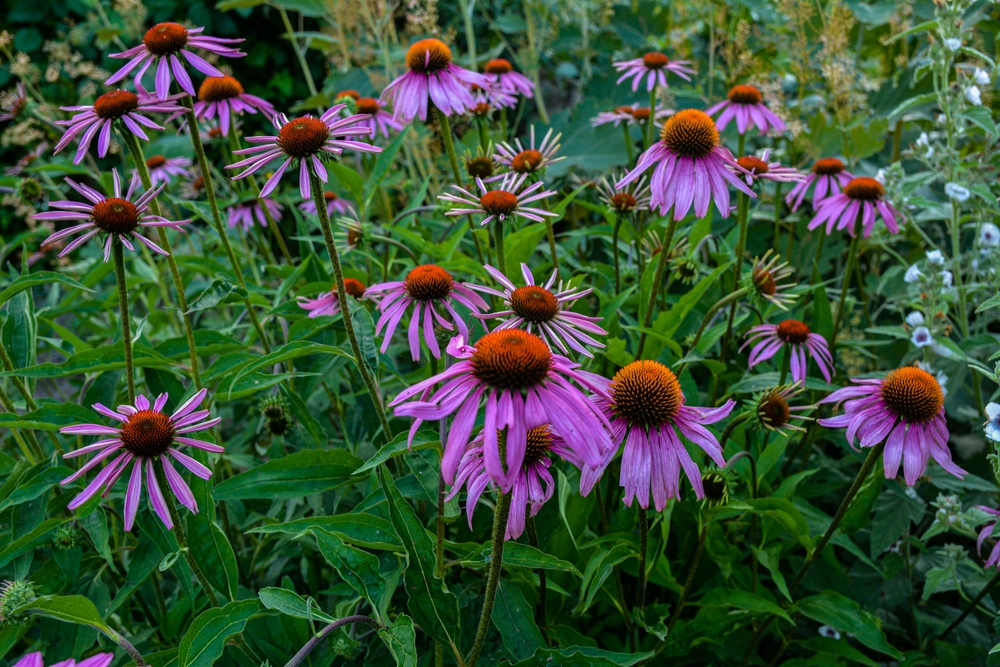
The purple coneflower is a hardy perennial that features large, daisy-like flowers with deep purple petals. The rich purple color is produced by anthocyanin pigments, which are enhanced by exposure to sunlight. Purple coneflowers bloom from summer to fall, providing long-lasting color in your garden. They are easy to grow in well-drained soil and full sun, and are tolerant of dry conditions.
These flowers not only add beauty to your garden, but they are also great for attracting pollinators such as bees and butterflies. The central cone, which starts out green and turns brown as the flower matures, adds visual interest. Purple coneflowers are also known for their medicinal properties, particularly in boosting immunity. Their resilience and vivid purple flowers make them an excellent choice for gardeners.
Lavender (Lavandula angustifolia)
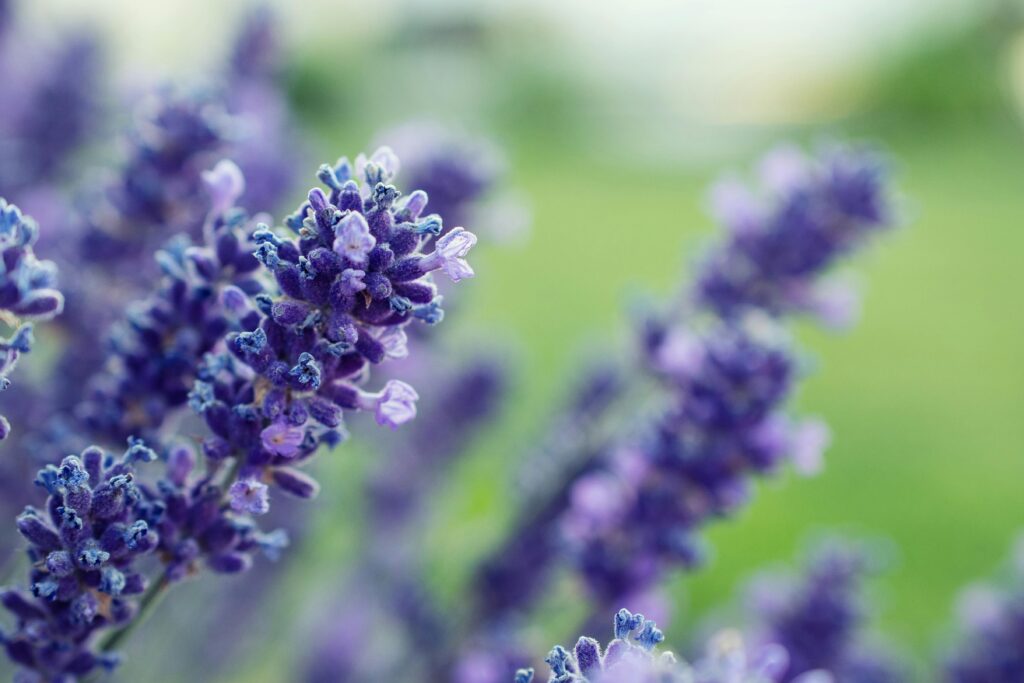
Lavender is known for its fragrant purple flowers, which come from the plant’s natural pigments called anthocyanins. These pigments produce the vibrant purple hue that contrasts beautifully against the plant’s silver-green foliage. Lavender thrives in well-drained soil and full sun, making it a perfect addition to gardens with plenty of sunlight. It is a low-maintenance perennial that attracts pollinators like bees and butterflies.
In addition to its lovely purple color, lavender is often used in aromatherapy and cooking. It is drought-tolerant once established and can be pruned after blooming to encourage new growth. The plant’s long blooming season, from early summer to fall, makes it a popular choice for any garden. Lavender adds both color and fragrance, making it an essential plant for those looking to enhance their garden’s sensory appeal.
Purple perennials are an excellent way to add sophistication and visual interest to your garden. From low-maintenance plants to those that attract wildlife, these flowers are a versatile addition to any landscape. With a variety of options available, you can create a garden that flourishes with purple hues throughout the year.
This article originally appeared on Avocadu.
